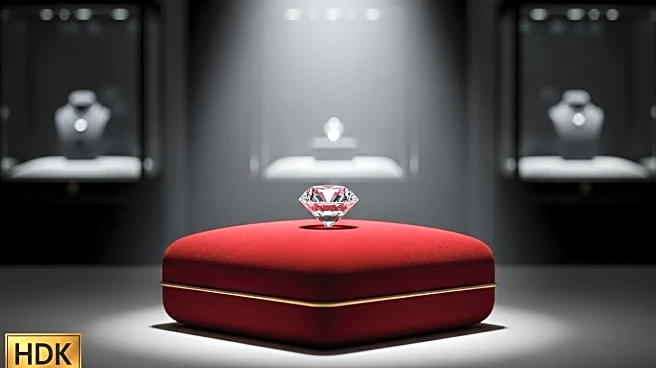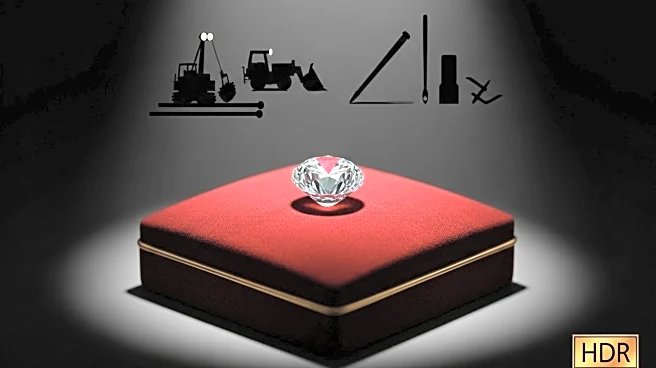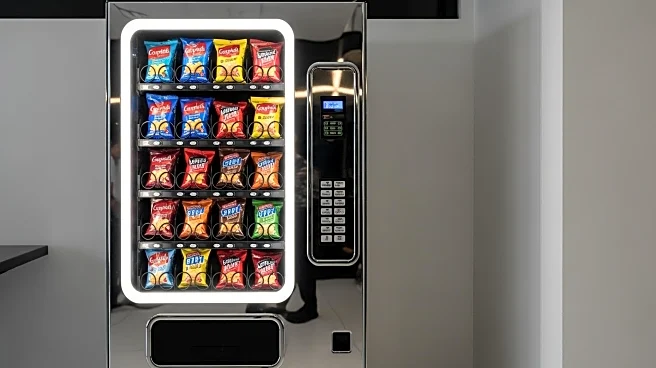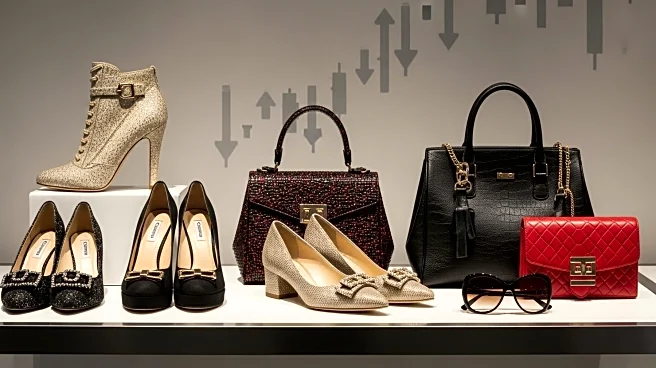What's Happening?
Signet Jewelers CEO J.K. Symancyk recently discussed the market dynamics for both natural and lab-grown diamonds in an interview with CNBC's Jim Cramer. Symancyk highlighted that customers purchasing diamonds above the $5,000 price point tend to prefer natural diamonds due to their perceived value as an asset. Conversely, lab-grown diamonds are gaining popularity, especially in engagement rings priced below $2,000, where emotional value is prioritized. Signet Jewelers, which owns brands like Kay Jewelers, Zales, and Jared, sees lab-grown diamonds as a category extender for fashion, making diamond jewelry more accessible and affordable. A study by The Knot revealed that 52% of couples in 2024 opted for lab-grown diamonds in their engagement rings, marking a 40% increase in popularity since 2019. Despite the trend towards more affordable jewelry, Symancyk noted that some consumers still invest in gold, which has reached an all-time high value.
Why It's Important?
The growing acceptance of lab-grown diamonds reflects a shift in consumer preferences towards affordability and sustainability in the jewelry market. This trend could significantly impact the diamond industry, potentially reducing demand for mined diamonds and altering traditional market dynamics. Signet Jewelers' strategic focus on lab-grown diamonds positions the company to capitalize on this shift, potentially increasing its market share and driving growth. The rise in gold prices also indicates a continued consumer interest in investing in precious metals, which could influence pricing strategies and product offerings in the jewelry sector. Overall, these developments highlight changing consumer values and the need for businesses to adapt to evolving market conditions.
What's Next?
Signet Jewelers may continue to expand its offerings of lab-grown diamonds, leveraging their affordability and appeal to a broader consumer base. The company could also explore new marketing strategies to emphasize the benefits of lab-grown diamonds, such as sustainability and cost-effectiveness. As consumer preferences evolve, other jewelry retailers might follow suit, increasing competition in the lab-grown diamond market. Additionally, fluctuations in gold prices could lead to adjustments in pricing and inventory strategies for precious metal jewelry.











